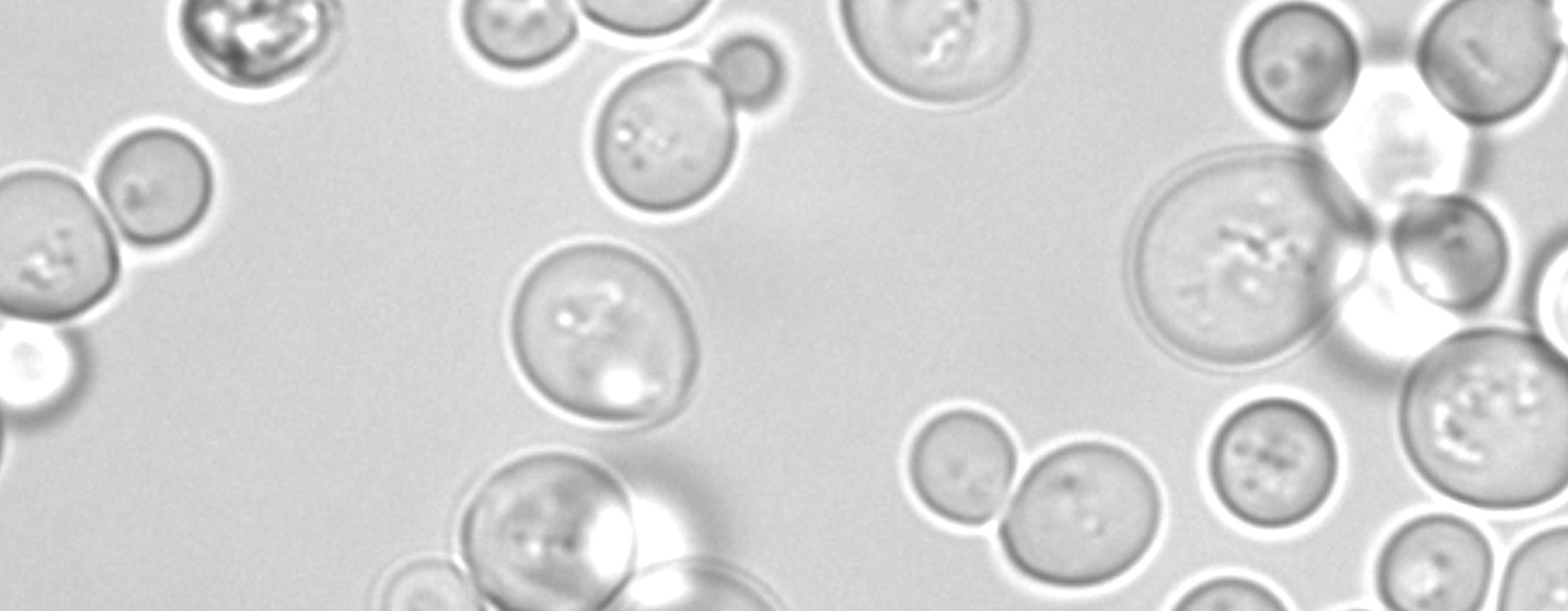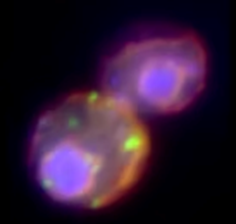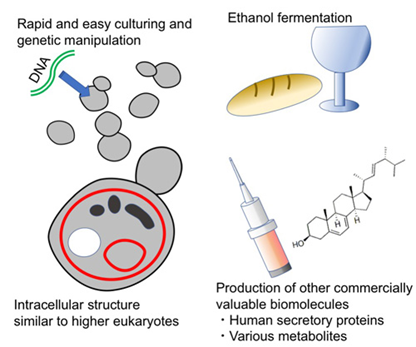
Laboratory of
Organelle Control
We focus on the functional regulation of the endoplasmic reticulum (ER), which is a membrane-enclosed organelle commonly carried by eukaryotic cells, using yeast cells as a model organism. Our research results will contribute to the development of yeast strains carrying an enforced ER, which can be used as commercially valuable biomolecules.

Fluorescence microscopy image of a yeast cell
Nuclei (blue), ER (red), and the ER-stress sensor Ire1 (green) were visualized.

Research topics
- Cellular mechanism to control organelle size, morphology, and function in response to environmental change
- Heterogenous biomolecule production by yeast cells
- Stress response upon yeast ethanol fermentation
- Approach to human diseases using yeast as a model organism
We are a newly launched laboratory started in April 2025.
Why do we study on yeasts?
Yeast Saccharomyces cerevisiae is a unicellular eukaryote that has a strong ability to perform ethanol fermentation, which is widely applied for production of alcoholic beverages, breads, and bioethanol. It should be noted that the S. cerevisiae genome, with a size of which is 13.3 Mb, is the first eukaryotic genome to be completely sequenced. Various techniques are available for genetic engineering of S. cerevisiae cells. In addition, S. cerevisiae cells can grow rapidly and inexpensively. Therefore, S. cerevisiae serves as a valuable model for basic researches on the biological phenomena observed in other eukaryotic species. Moreover, because of these advantageous features, S. cerevisiae are used for the production of a wide variety of commercially valuable metabolites and heterogeneous proteins. Human secretory proteins, such as insulin and cytokines, made by yeasts are used as biopharmaceuticals to treat human diseases.

Feature and usage of yeast S. cerevisiae



